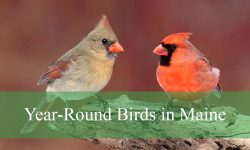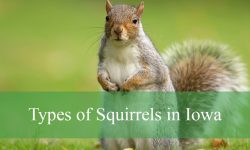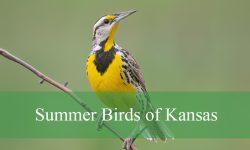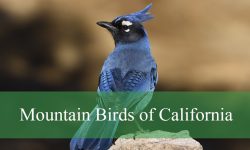Woodpeckers in Iowa contribute to the state’s vibrant avian biodiversity, captivating birdwatchers with their distinctive behaviors and appearances. From the energetic drumming of the Downy Woodpecker in urban settings to the majestic presence of the Pileated Woodpecker in old woodlands, these feathered inhabitants play a crucial role in Iowa’s ecosystems.
Whether you’re strolling through parks, exploring golf courses, or simply enjoying the tranquility of suburban backyards, chances are you’ll encounter the rhythmic sounds and vibrant plumage of these fascinating woodpeckers.
The article below will provide you with information about 11 woodpecker species found in Iowa, along with images and their identifying characteristics.
Different types of woodpeckers in Iowa
Northern Flicker (Colaptes auratus)
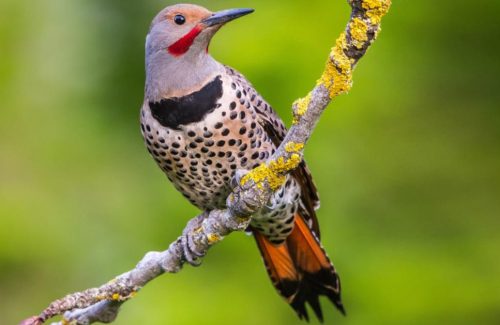
Given its year-round availability, the Northern Flicker is a fantastic option for novice birdwatchers in Iowa when it comes to woodpecker accessibility. Northern Flickers move to warmer climates in the winter; a sizable population of these birds is seen in Iowa. The birds travel to Alaska and Canada. These woodpeckers live in arboreal settings like parks, cemeteries, and residential neighborhoods.
The vast size of northern flickers is what sets them apart; their physical characteristics vary according on the gender and age; on average, they are between 30 and 35 cm long, 4 and 7 ounces heavy, and have a wingspan of 54.1 cm. Their back and breast are speckled with black, and their overall color is a grayish brown. When they are in flight, their brilliant white feathers surrounding their rump are highly visible. In the eastern United States, which includes Iowa, they have yellow or red tails.
During the spring mating season, the sound of Northern Flickers is easily identifiable. Unlike other woodpeckers that hunt in trees, Northern flickers feed on insects like caterpillars, ants, beetles, and termites by digging holes in the ground.
Downy Woodpecker (Dryobates pubescens)
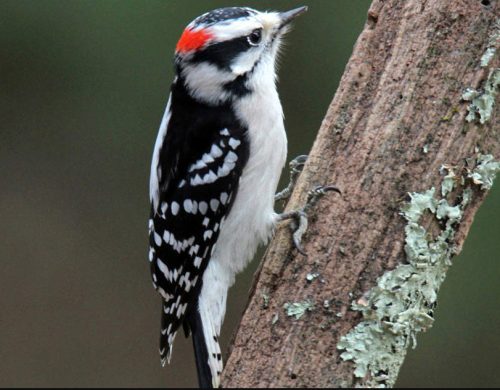
The Downy Woodpecker (Dryobates pubescens), albeit the smallest woodpecker in Iowa and the United States, is every bit as fascinating as its larger state counterparts.
Rather than migrate, downy woodpeckers live year-round in Iowa due to the state’s consistent weather. They nest in backyards, parks, forests, groves, and both rural and urban places; they reside in tree cavities. A suet feeder hung in your yard will attract them in the winter months in Iowa.
The dotted wings, white chest, and black and white feathers of downy woodpeckers set them apart from their hairy counterparts, despite their lesser stature. Adult males’ heads are spotted with crimson.
Downy woodpeckers beat fast on trees and create high-pitched, whining noises when they mark territory or search for a mate. Their broad diet includes cereals, berries, peanuts, sunflower seeds, acorns, suet, and other insects in addition to hunting for ants, caterpillars, beetle larvae, and other insects.
Hairy Woodpecker
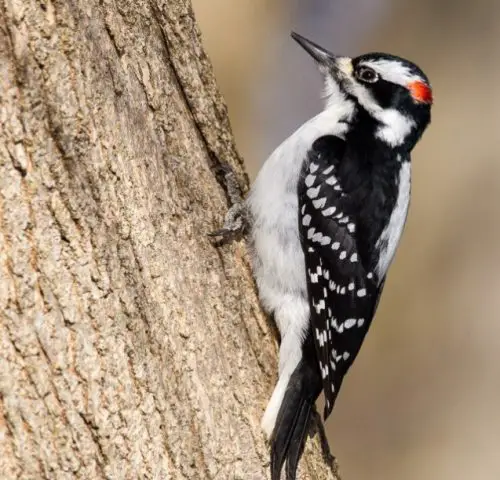
The Hairy Woodpecker gets its name from the long, thread-like white feathers on its all-black back. These medium-sized birds are less common in Iowa than Northern flickers, but they are nevertheless visible in parks, cemeteries, backyard bird feeders, and suburban wooded areas.
Since they usually nest in dead trees, Hairy Woodpeckers don’t migrate; instead, they stay in one location and become more apparent in the winter. Some of their unique features are their black and white plumage, pastel bellies, and long beaks. They weigh between one and four ounces, with an average length of 18 to 26 centimeters and a wingspan of 35 cm.
The male Hairy Woodpecker may be easily distinguished from the female thanks to a red patch on his nape. Males drum swiftly on trees and cry out in a high-frequency, piercing manner.
The main food source for Hairy Woodpeckers is beetle and ant larvae, along with caterpillars, spiders, and bees.
Yellow-Bellied Sapsucker (Sphyrapicus varius)
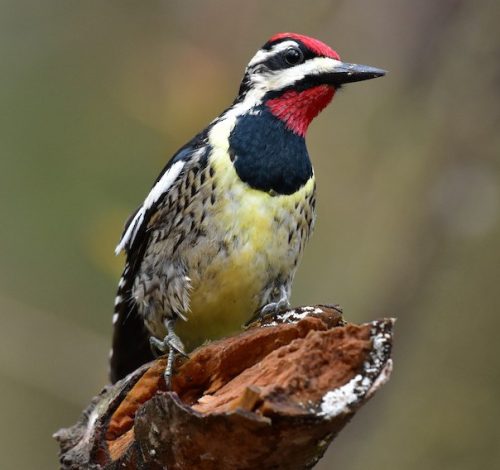
The Yellow-Bellied Sapsucker (Sphyrapicus varius), despite its small size, is the most extensively dispersed woodpecker in Iowa. It breeds throughout Canada’s coast and returns to Iowa for the winter.
In the off-season, these sapsuckers inhabit many regions of Iowa, preferring tall trees in woodland settings over suet feeders in homes. Their shoulders bear a stripe that helps identify them as medium-sized, black-and-white creatures. Both sexes range in size from 1.5 to 2 ounces, 20 cm long, and have an average wingspan of 37 cm. Males have red foreheads and throats, while females have less vibrant yellow and white throats. As the name suggests, they have pale yellow underbellies.
Bellied in Yellow During mating season, sapsuckers make a distinctive nasal mewing sound and a territorial, screaming, repeated call. Wild berries, fruits, flying insects, sap, and sapwood make up their food.
Red-bellied Woodpecker (Melanerpes carolinus)
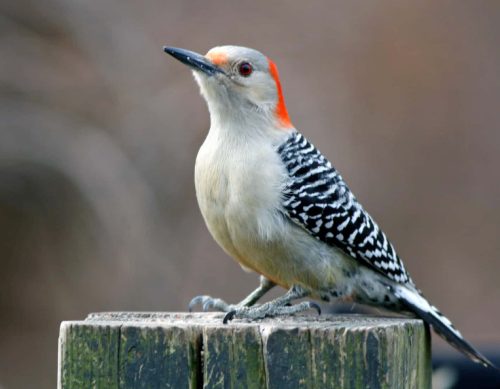
Red-Bellied Woodpeckers (Melanerpes carolinus) are medium-sized woodpeckers that are easily identified in Iowa woodlands by their bright red crowns and black and white striped backs.
These year-round inhabitants of Iowa like to drum and build their nests in woodland areas and on oak and hickory trees; they often return to the same tree year after year. Because of their similar red heads, red-bellied and red-headed woodpeckers are sometimes mistaken. Red-bellied woodpeckers are smaller and have creamy white bellies. Both sexes have black and white striped feathers that reach weights of 2 to 3.2 ounces, lengths of 22 to 27 cm, and average wingspans of 42 cm. The nape and crown of males are red, whereas the nape of females is red.
From early winter until late spring, male red-bellied woodpeckers can be heard making a pounding sound on trees in an attempt to entice females. It is both sexes that roll “churr” or “kwirr” calls. Red-bellied woodpeckers in Iowa consume more fruits—like wild berries—than insects, in contrast to other woodpecker species.
Red-Headed Woodpecker (Melanerpes erythrocephalus)
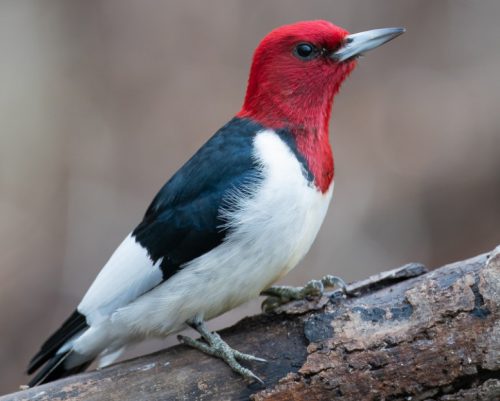
The Red-Headed Woodpecker (Melanerpes erythrocephalus) is a woodpecker that is less frequent than other woodpeckers, although it is still visible in Iowa during the summer and winter. Seldom seen, it is breathtakingly gorgeous, adding to the memorable nature of the meeting.
Although they live in Iowa all year round, the population of these woodpeckers has decreased due to habitat loss. Backyards can attract birds for observation, especially in the winter, by adding citrus or suet to bird feeders. They inhabit woodlands, parks, orchards, and forests with fallen trees for nesting.
Young red-headed woodpeckers are dark brown to black in appearance, with pale red cheeks and white spots on their wings. When they reach adulthood, their wings turn full black and their underside white, with their heads, necks, and napes changing to a deep, velvety crimson. Adults can reach average size measurements of 21 to 25 cm in length, 35 cm in width, and 2 to 3.5 ounces in weight.
In addition to chirping and chuckling, Red-Headed Woodpeckers are most recognized for their “shrill tchur,” a high-pitched call with less rolling.
These woodpeckers forage for nuts and seeds, which they bury in tree bark or hollows to stockpile for the winter. Additionally, they have a habit only woodpeckers have: they fly up and gather insects.
Red-cockaded Woodpecker (Leuconotopicus borealis)
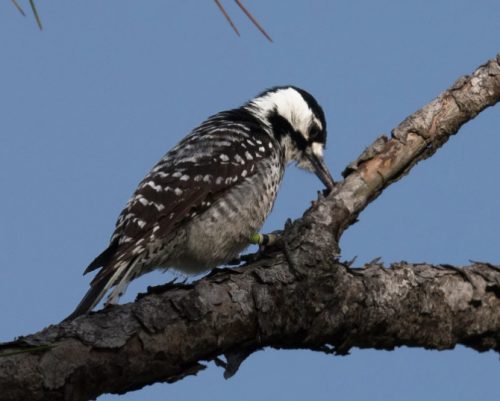
Because of logging, the Red-cockaded Woodpecker is the only species of woodpecker that has been categorized as endangered since 1970. The majority of these woodpeckers in Iowa live in areas with longleaf pines, and state-wide conservation initiatives are intended to protect their continued survival.
These woodpeckers are medium-sized, have black and white feathers, a black hat, a black nape, and white facial feathers. Only the males have red stripes on their cheeks. When frightened or unsettled, they make a unique, raspy “sklit” call, and they also have a regular call that sounds like a normal “churt.”
Ivory-billed Woodpecker (Campephilus principalis)
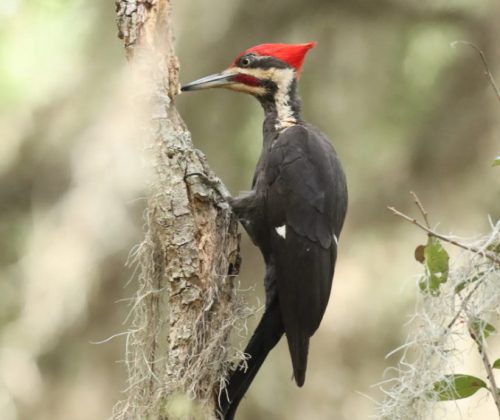
One of the world’s most exquisite woodpeckers, the ivory-billed woodpecker sadly went extinct in 1944; the last known sighting was in Louisiana. After a sighting was reported in eastern Iowa in 2015, followers’ excitement and optimism were rekindled.
Ongoing debates concerning the bird’s existence have been sparked by more sightings and initiatives to restore its habitat. Skeptics argue that these results could be confused with the very similar Pileated Woodpecker, which is distinguished by its thick white back.
Because the U.S. Fish and Wildlife Service extended the species status review to January 2023 as of July 2022, there is a chance that Ivory-billed Woodpeckers will survive.
Lewis’ Woodpecker (Melanerpes lewis)
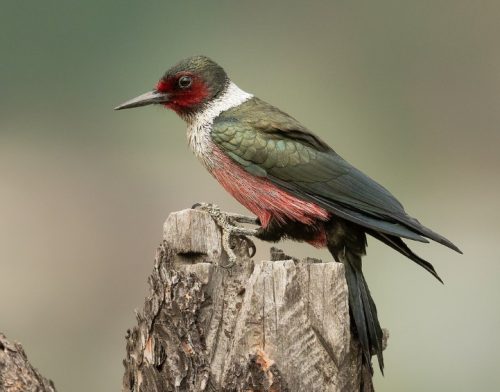
Lewis’ Woodpeckers (Melanerpes lewis), which have only been seen four times at Mount Sequoyah, are currently regarded as an accidental or rare species in Iowa and have been put on the yellow watch list because of their declining numbers. These woodpeckers are easily recognized by their black heads, red cheeks, black wings, grayish collars with a smattering of white feathers on the chest, and pinkish and red underbellies.
Adults are among the largest woodpeckers in Iowa, weighing between 3.1 and 4.9 ounces and having a wingspan of 19.3 to 20.5 inches. They measure from 10.2 and 11.0 inches in length. Lewis’ Woodpeckers do well in pine, cottonwood, paper birch, and any other dead or decaying tree. It’s noteworthy to note that they rarely build their own nests, preferring to reside in others that other woodpeckers have created.
Pileated Woodpecker (Dryocopus pileatus)
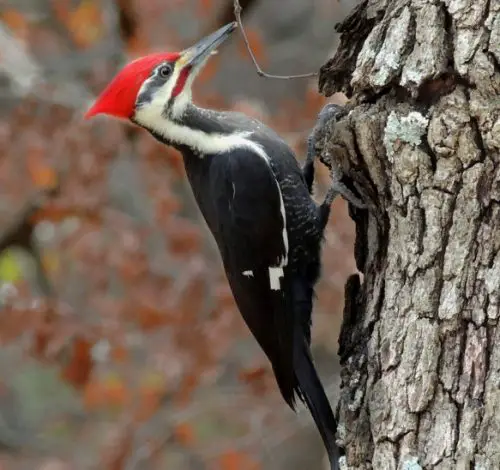
The gorgeous Pileated Woodpeckers, a protected species that requires attention when taking images or videos, entice visitors to Iowa.
Pileated woodpeckers inhabit dead trees, old woodlands, and forests with fallen logs in Iowa. They live there all year round. They are also found in many other places, including backyards in suburban and rural areas, parks, and golf courses.
These woodpeckers are adamant about not moving, choosing to live their entire lives in a certain town or state, unless they feel that the danger to their nest and eggs is too great. The crimson crest on the black and white striped back of Pileated Woodpeckers stands out against their otherwise crow-like proportions. There could be a crimson streak down the side of men’s faces.
Adults can grow to a maximum length of 40 to 50 cm, weigh 8 to 13 ounces, and have an average wingspan of 70 cm, making them one of the largest woodpeckers in Iowa. Observers may be reminded of the Woody Woodpecker cartoon figure by their amazing appearance, which was apparently based on this kind of bird.
With up to 30 taps in a second, Pileated Woodpeckers can produce amazing drumming sounds, especially considering their size. Both sexes drum year-round in an attempt to attract possible mates or stake out territory.
The Pileated Woodpecker’s favorite food source is carpenter ants, which it forages for on the ground and in dead trees. They attach their discoveries to branches by occasionally consuming fruit and nuts.
People Who Read This Also Read:

